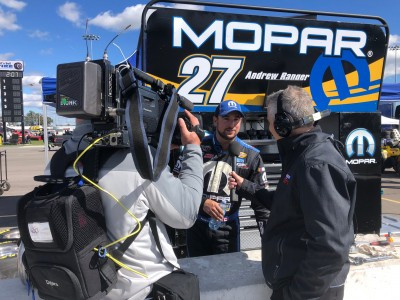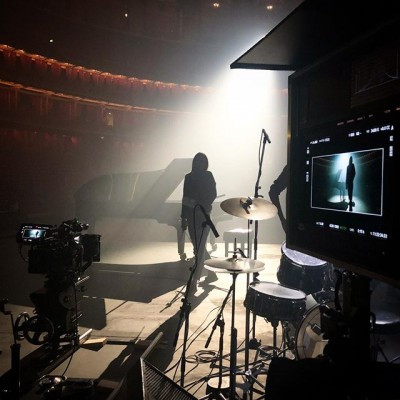by Angus Mackay Issue 99 - March 2015
As one of the world\'s leading oil and gas companies, BP has a long history of producing a variety of film, video, and multimedia, and currently has an archive of over fifteen thousand films dating back over a century.
The productions cover topics ranging from scientific discovery, energy exploration, community outreach, motor sports, branding, internal communications and everything in between. To satisfy this appetite, BP has traditionally outsourced production to a variety of agencies and production companies around the world, which have delivered the high quality content required by such a prestigious brand.
With an eye on innovation and a desire to maximize value, and thanks to ever more accessible technology, BP has recently started bringing productions in-house, allowing them to shorten production times, maintain quality, and cut costs.
"The same corporate piece that used to cost $5000 now costs $3000 - a saving to BP of 40%. The quality doesn\'t drop, and our colleagues agree; we\'ve now produced over 50 films internally, with a savings ~ of about $1 million in the last year. It\'s been very successful", says Steven Croston, commissioning editor for BP-TV, the in-house film and video unit. With such success, other departments at BP have begun to use the in-house production team to produce a broad range of brand communications and training films.
Both archival and current content are made available through public and private video portals allowing BP to reach both external and internal audiences. As Croston says, "Video is a critical element in BP\'s communications mix; we have a huge appetite for well-produced, effective programmes."
As a shared internal resource, Croston\'s team is able to offer an efficient approach through sharing of assets, talent, and equipment. For example, in 2014 it was able to deliver two separate projects, "BP at its Best,\" a series of brand values and behaviours films, and a series of 15 films for BP\'s \'Helios Awards\', an internal awards programme, out of material generated out of one production run.
BP-TV had one existing edit suite when the project started, and when Steven Croston and Alexander Goff, head of post-production, evaluated the workload, they brought in two more systems after consulting with Salon, the London-based Tiger Technology Sales Partner and broadcast hire (rental) company.
It was clear from the start that shared storage would be required. "I\'d used other editing software and shared storage solutions with other production companies and the results had not always been great, so we decided to go with Adobe Premiere and a Tiger Box shared storage workflow system to power the suites,\" said Goff.
The crews shot 7 terabytes of 2K footage using Sony F55 cameras, and shipped material back to London for post-production and finishing. Editing would start as soon as the drives arrived and the material was loaded onto the Tiger Box.
The team needed the material to be shared among the three suites, so they could easily work on both projects at once. Using fast fibre connections, they would edit one set of films, and then while it was being polished in another suite, start the work on the next set.
"For a UHD project, this was pretty cool. The Tiger Box was stable and reliable which allowed us to focus on the work at hand - not wasting time allows us to deliver a better final project.\" Audio editing was done primarily in Premiere, with more demanding mixes being sent out for audio post and final colour grading.
At the end of the project, Steven Croston said "With three production units, we shot for four weeks in nine countries, and with three edit suites, and Tiger Box, we completed fifteen films in a total of six weeks with another 13 off-lined within ten weeks. The Tiger system worked completely brilliantly for us. It gave us a huge productivity boost, and our internal clients have been thrilled."
When it came time to return the rental equipment that had been brought in, BP evaluated the Tiger Box, and made the decision to purchase the system outright and use it for ongoing production.
Steven Croston concluded "It\'s working really well. The editors found it intuitive, the interface is well laid out, and the way it locks and releases projects while they are working makes it very easy for them to manage who is working on what."
Now that it\'s equipped with a full-scale efficient and cost-effective internal production department, BP is clearly helping to satisfy that huge appetite for video.


























